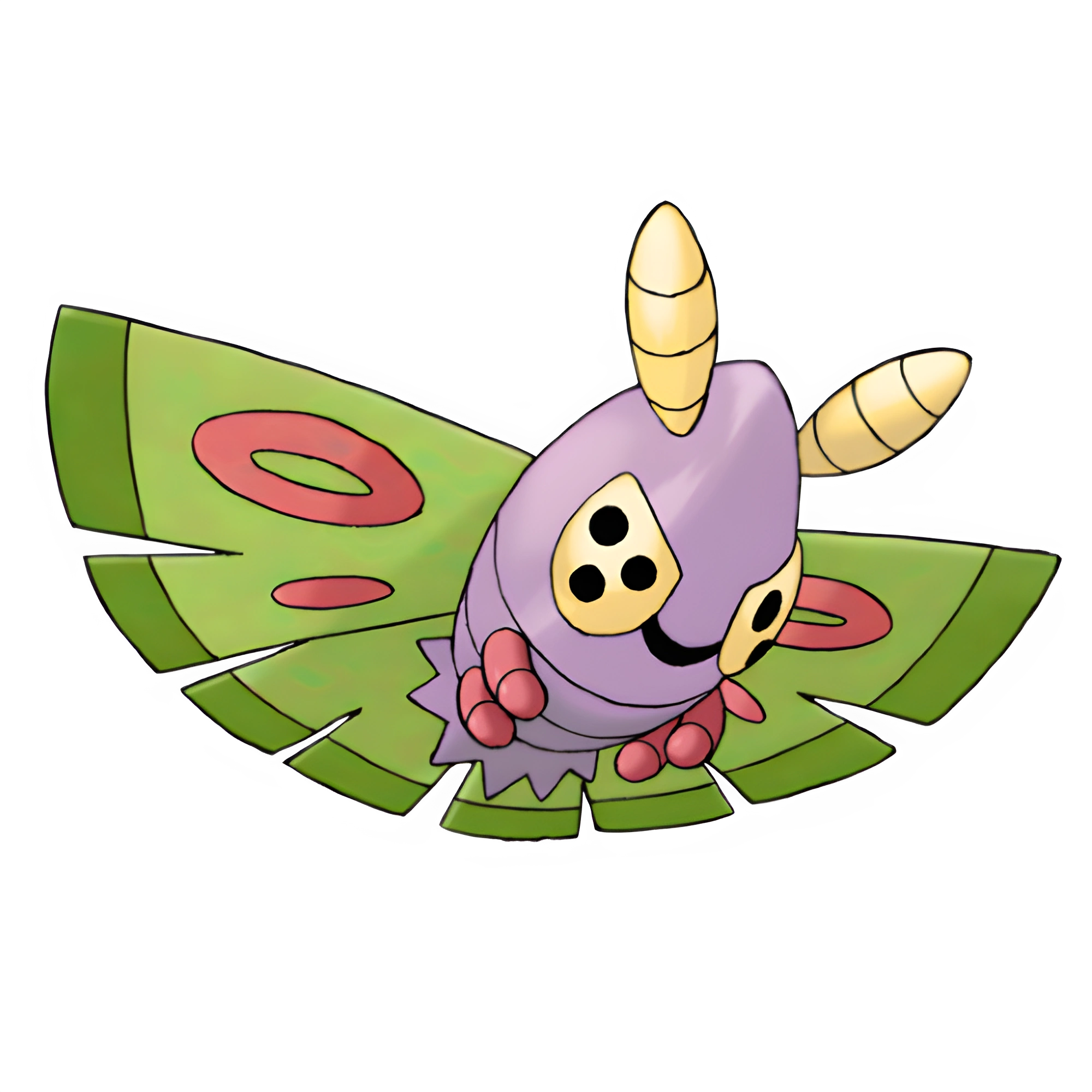Facts for Kids
Dustox is a Bug/Poison-type Pokémon characterized by its large wings and ability to sense emotions, evolving from Cascoon at level 10.
Overview
Fun Facts
Conservation Status
Behavior And Ecology
Diet And Feeding Habits
Habitat And Distribution
Evolution And Adaptations
Biology And Classification
Significance In Popular Culture

Inside this Article
Sense Of Smell
Caterpillar
Beautifly
Pollution
Pokémon
Gardens
Nature
Sting
Love
Did you know?
🪶 Dustox is known as the Poison Moth Pokémon.
🌙 It evolves from Cascoon starting at level 10.
🍃 Dustox is a Bug/Poison-type Pokémon.
🌼 Its large, colorful wings can confuse opponents.
✨ Dustox is known for its ability to sense the emotions of others.
🌧️ It's often found in forests and urban areas alike.
🦋 Dustox can fabricate special powders that can cause various effects.
💨 Its wings have a faint glow, which is used to attract mates.
🔬 Dustox has the ability Overcoat, which protects it from damage from weather effects.
🌎 Dustox is part of the Hoenn region's native species.
Introduction
It has purple wings with green spots and a fuzzy body. Dustox is a Bug and Poison-type Pokémon, which means it has special abilities related to both of these elements. It first appeared in Pokémon Ruby and Sapphire games, which were released in Japan in 2002! Dustox evolves from Wurmple, which is a small caterpillar Pokémon. When it evolves, it doesn’t just get bigger; it also gets new powers and abilities! Dustox is known to flit about in the night, making it an interesting Pokémon to spot!
Fun Facts
This fun feature makes it easier for other Pokémon to spot it at night! Dustox weighs about as much as a large dog! 🐕
The name "Dustox" comes from “dust” and “toxic,” highlighting its poison-type status. If you ever play the Pokémon games, try catching a Dustox and watching its special moves in action! Dustox is not just a Pokémon; it’s also a reminder to appreciate the beauty in nature! 🌼
Conservation Status
It is commonly found in Pokémon habitats and is often seen in many games. However, just like real-life butterflies, it’s essential to keep their habitats clean and free from pollution. Protecting their environment will help ensure that Dustox continues to thrive! There are many organizations working to protect butterflies and insects, ensuring their homes are safe. Helping to plant flowers and keep our parks clean can also support Pokémon like Dustox!
Behavior And Ecology
It uses its keen sense of smell to find food and avoid danger. Dustox likes to live in groups, often seen flying in small swarms. In the wild, Dustox plays an essential role in pollinating plants, similar to how real butterflies work! At night, they are also known to produce a sweet scent that attracts Pokémon and trainers alike. This ability makes Dustox essential for keeping the ecosystem balanced!
Diet And Feeding Habits
It uses its long mouth, called a proboscis, to sip sweet nectar. By doing this, Dustox helps plants grow and thrive, just like real butterflies do! Dustox is also known to eat leaves and fruits if nectar is hard to find. It enjoys flying from flower to flower, helping pollinate them while it eats! This relationship helps Dustox and the plants coexist in nature. Isn’t it wonderful how one creature can help another?
Habitat And Distribution
In these habitats, Dustox can easily hide among flowers and leaves. It loves to fly around during the night, fluttering from flower to flower. While it is not found in all regions, you can also catch it in games set in places like Sinnoh and Unova! 🌍
People have reported seeing Dustox in their gardens, especially if there are plenty of flowers around for it to enjoy.
Evolution And Adaptations
Its evolution brings new colors and abilities! Dustox can evolve in two different ways depending on how it evolves. If Wurmple evolves into Silcoon, it turns into Beautifly, while if it evolves into Cascoon, it becomes Dustox! In battles, Dustox has a defensive ability called "Shield Dust," which protects it from special effects of moves. This shows how Dustox has adapted to survive in the wild. 🌼
Isn’t it interesting how Pokémon can evolve into different forms?
Biology And Classification
Significance In Popular Culture
It is featured in animated series, movies, and trading card games. Dustox represents many colorful aspects of nature and teaches us about the important role insects play in our ecosystems! 🌎
Many young fans enjoy its cute design and even create fan art of this Pokémon. Dustox encourages kids to learn more about butterflies and nature, making it a favorite among Pokémon trainers!

